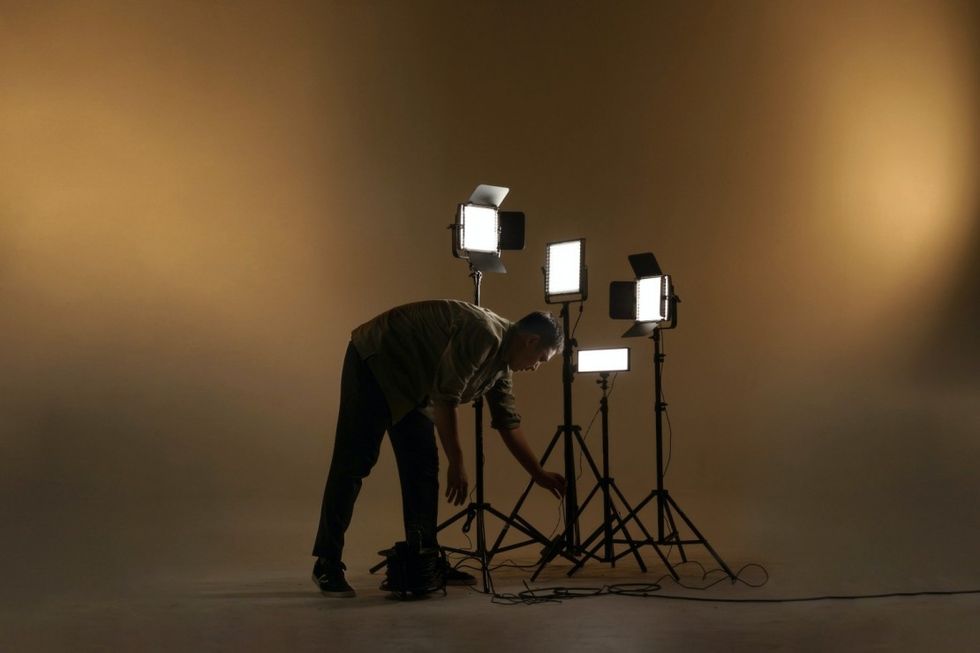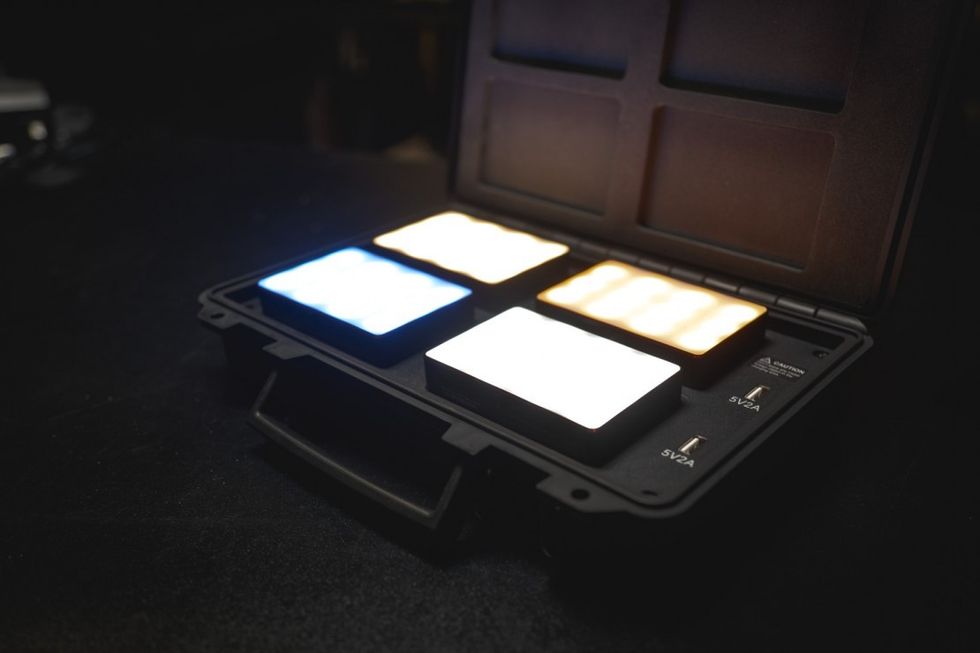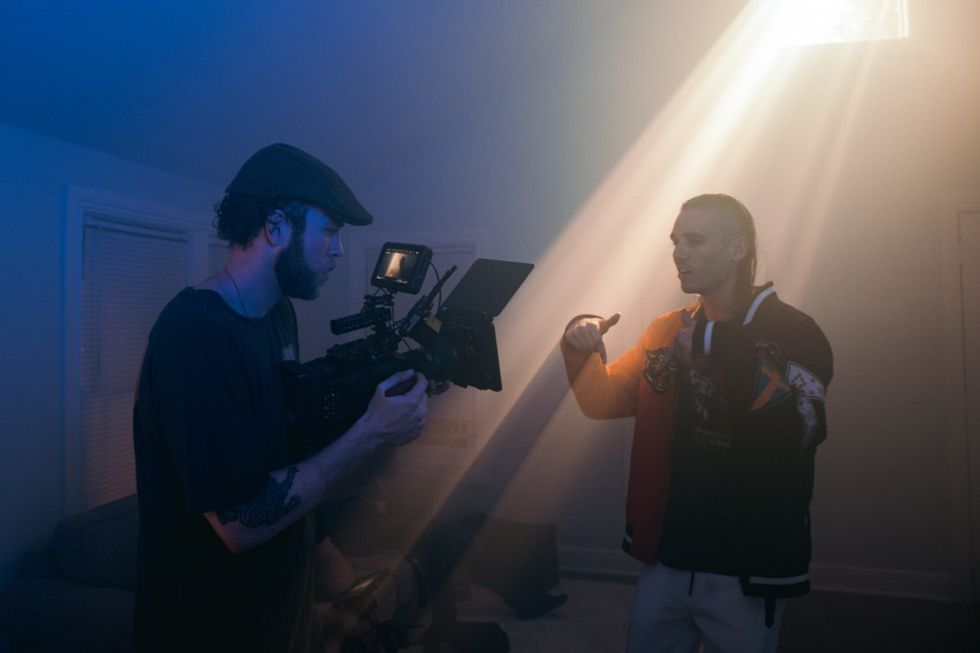What Are LED Film Lights, and How Do LED Lights Work?
LEDs are everywhere these days. But do you really understand this amazingly popular and flexible filmmaking tool?
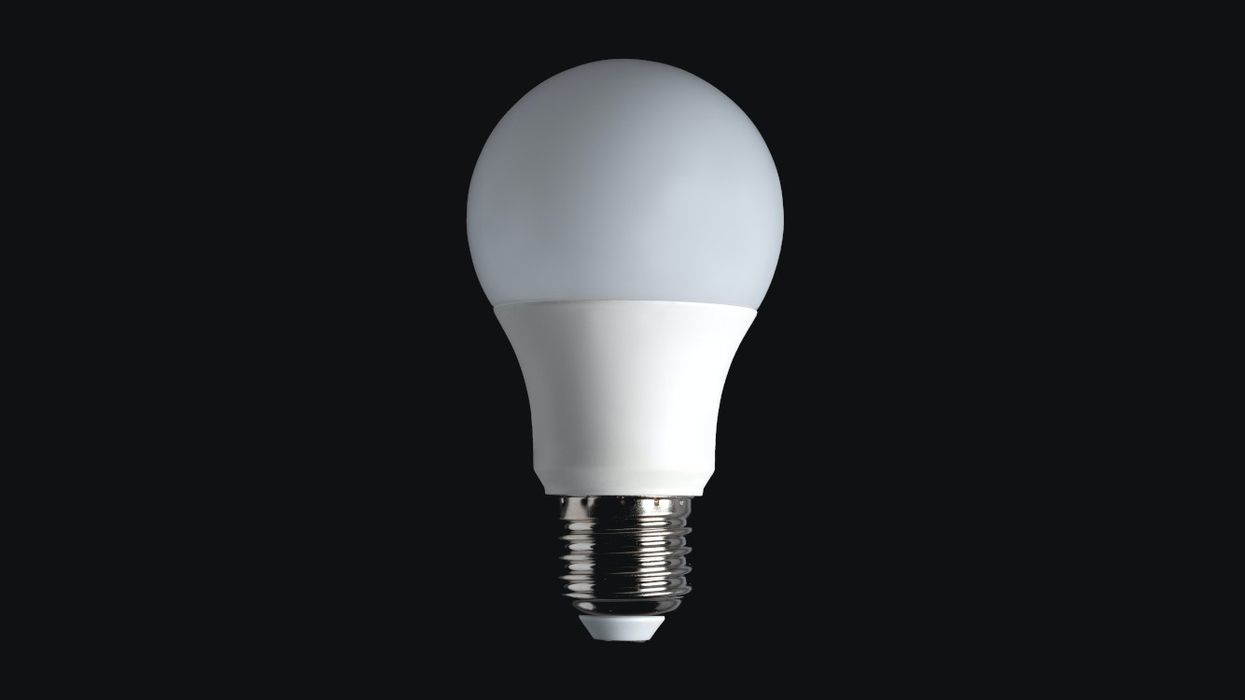
To use something correctly and maximize its capacity, you need to fully understand it. LED lighting is becoming the go-to for filmmakers of all types at all stages of their careers.
But knowing why these lights are so popular and work so well can give you a true edge in any filmmaking setting, helping you to craft better images with more of an acute understanding of the science behind the art.
To become a great filmmaker today, you need to learn about LED lighting.
It might sound intimidating at first, but by the end of this post, we'll make sure you understand far more than just the basics of LED lights and LED lighting.
You'll be an LED master.
What Does LED Stand for in LED Lights?
LED stands for light-emitting diode. That is the most straightforward LED light definition. But that begs another question...
What is a light-emitting diode?
A diode produces light with the help of an electrical current passing through something called a semiconductor material.
Different types of LED material emit different colors.
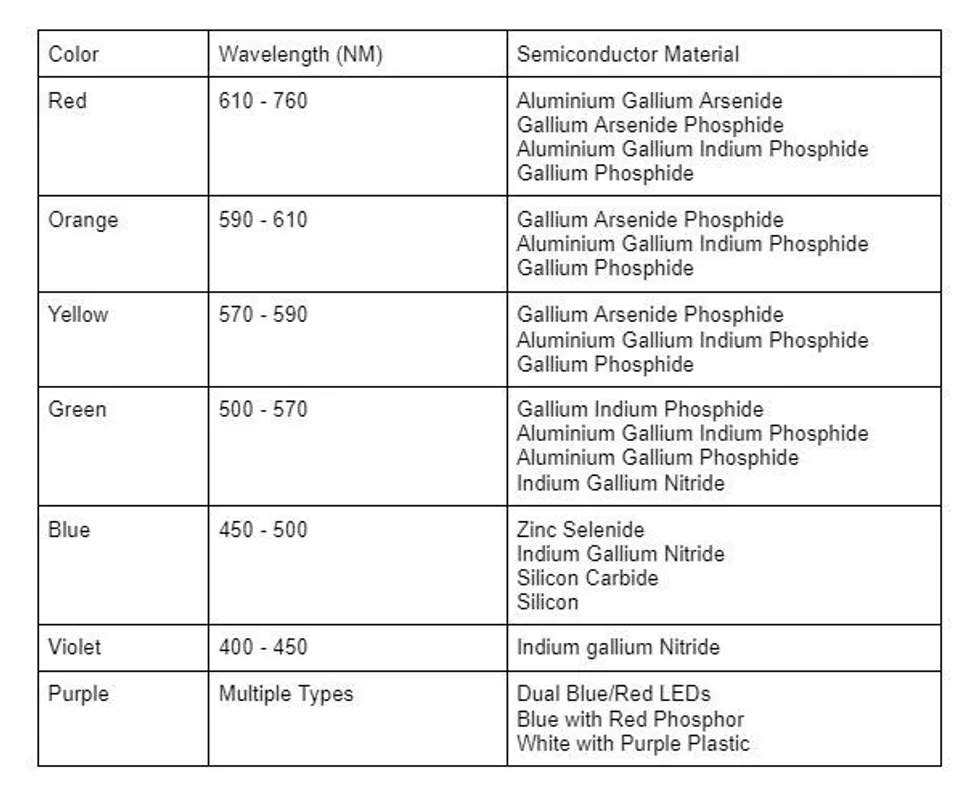
How Do LED Lights Work?
What is LED light, in a physical sense? The phenomenon that we have to thank for all of the LEDs in our lives: electroluminescence, which is a fancy word for the light that is produced when a semiconductor is excited by the electrical current.
A light diode is rated in terms of an attribute called luminous efficacy, measured in lumens per watt. Essentially, this describes the ratio of output to power drawn for the LED light in question—i.e., how effectively a source produces visible light.
These fixtures are simple while remaining powerful enough to penetrate even the darkest corners of society. Coal miners, deep-sea divers, and underwater welders all rely on strong, unfaltering light to do their work safely and competently, sometimes under great pressure. LED light technology makes this more than possible. More delicate types of light fixtures need not apply.
LED lights have certainly found a home in the realm of filmmaking. While our needs may not be as dire, the relatively high output and durability of LED lights are perfect for shooting anywhere, whether you're scaling the side of a remote cliff while shooting a documentary or just having some fun with your crew in your backyard.
What Is LED Lighting Technology, and How Does It Relate to Filmmaking?
Nearly all major lighting companies now offer LED lighting in one form or another. LED lights are quickly growing in popularity as a cost-effective and versatile alternative to tungsten lights and HMIs.
Some of the benefits of LED film lights, in a general sense:
- LED lights are relatively intense when compared to how much power they draw
- They emit very little heat, even after being in use for some time
- They're energy-efficient, low-voltage, reliable, and long-lasting
- They're much less likely to fail if they've been dropped or damaged physically
We love LED lights because they provide everything that most DIY filmmakers need: lots of light originating from a fixture that can simply be plugged into the wall. Many regular film lights are designed for studio use exclusively. Unless your home is equipped to handle camlock and Bates cable, you'll need to drag a generator on-site to use anything larger than a 2K fresnel. This limitation protects your home's utility system (and the grid as a whole), but at great cost to your artistic vision.
LEDs will usually not require any of these accommodations to light the scene adequately. Most are battery-run or can be plugged into any standard Edison outlet. As long as you remain below the amperage rating of the circuits that you're drawing from, they're the DIY filmmaker's fixture of choice.
LED Lights for Filmmaking: Pros and Cons
The benefits of using LED technology on any set are obvious—they generate much less heat than ordinary incandescent lights, as mentioned previously. They also draw much less power than traditional tungsten lights and HMIs of an equal output rating, making LEDs a natural choice for one shooting on-location.
One other positive aspect of LED lights is that they're very convenient and easy to use. Operating them is simple enough for even a non-filmmaker to wrangle, just in case push comes to shove. The maintenance necessary long-term will be minimal. If you're working small, the most cumbersome part of your set-up will be running a stinger from the outlet to the head.
LED Light Color Temperature
A tungsten fixture on its own plays well with warm incandescents and things like candlelight. HMIs are cool enough to contend with the sun when shooting outdoors or near a window. To hop between these two looks, however, you would need to break everything down and set yourself up again with the opposing configuration. With many brands of LED lights, this will never be a problem.
What is the color temperature of LED lights? As mentioned previously, that depends on the semiconductor material that the manufacturer chose. Architectural LED lights will usually be some sort of soft white, or a color temperature that emulates the look of natural light. These commercial LED lights also tend to emit "polluted" light after being in use for so many years, eventually erring either toward too much green or too much magenta.
LED lights for film are designed a little differently, although cheaper ones may fall victim to a reduction in temperature purity just like ordinary LEDs.
Right out of the box, many brands of LED light panels are known for their ability to emulate both ends of the color temperature spectrum, from 3200k to 7200k. These models house two sets of LED lightbulbs, one matched to tungsten light and the other matched to daylight.
You will usually have the ability to dwell between these two extremes by dimming both sets of lightbulbs. We advise that you avoid doing so for two major reasons:
First, the aesthetic appeal of mixing sources of different color temperatures is questionable at best. Some will cite that a frame that makes use of both ends of the spectrum from different sources is dynamic and interesting. Producing both colors from the same source, however, doesn't usually look good. Balancing the color temperature of the image starts with your film stock or camera settings. The lights that you use should follow appropriately.
Second, dimming an LED light will likely cause you a whole host of technical problems, even if using flicker-free LED lights. These include faltering and other issues sustaining the light consistently as you get near the bottom, causing the light to fail before the dial reaches zero.
The flickering conundrum will be of particular note to many. Why do LED lights flicker, even if they were made for film?
LED Light Flicker
In accordance with the 60hz AC utility frequency in the United States, the electric current that runs through the LED bulb does so 60 times per second, with 60 lapses in power between each pulse. While that's too fast for us to see, we may notice the effect on-camera if the flicker and our frame rate or shutter angle fall out of sync. Many of the flicker-free LED lights made for filmmaking can run off of battery-provided DC power, but they may still be subject to flicker if plugged into an AC outlet when running low.
Neither of these theoretical lights will be impervious to the notorious flicker that dimming LED lights is known to cause. This is probably one of the greatest challenges associated with working with LED lights for filmmaking.
To dim an LED light, the frequency of ons and offs are shifted by way of something called Pulse Width Modulation, or PWM for short. If an uninterrupted cycle can be considered in terms of the maximum number of ons that an LED light is capable of, dimming LED lights is made possible by "canceling" so many ons per cycle.
If you've ever tried to take a single still photo of a dimming LED light panel or strip under the right conditions, you may notice "banding." The camera is actually fast enough to catch the "wave" of offs perforating what would ordinarily be a completely continuous progression of ons.
Consider the way that acquiring video works; it's nothing more than a series of photos taken in sequence. If some or all of the bulbs of an LED light panel are off at the moment of acquisition, the frame will be dark. This is what we recognize as LED flicker in filmmaking.
Is there any way around this? Absolutely. Stop dimming LED lights. Instead, opt to knock a stop or two off with scrims, nets, diffusion, distance, anything at all aside from dimming them.
DIY LED Lights for Filmmaking
There are many brands of commercial LED film lights to choose from. If you’re balling on a budget, however, your money may be more wisely spent elsewhere. Luckily, DIY LED lighting can be a really fun game to play.
Because LEDs are ubiquitous in our world, capitalizing on them is often as easy as choosing one and rolling with it, for better or for worse. As long as your source isn't flickering and disrupting your footage, any LED light running at the maximum output will probably be fine.
A few examples of choice DIY LED lights, ripe for the picking:
- An old monitor or television screen
- An old cell phone
- Ordinary, residential LED light bulbs
- LED strips from Home Depot
- Super-bright LED work lights
- LED Christmas lights, especially cool as practicals within the frame
Half of the battle when using found DIY lighting is directing the light emitted, both to intensify your "spot" and to prevent extra light from spilling out elsewhere into the scene. The latter is easily solved with some blackwrap backing or Duvetyne draped over the dumb side.
The idea is that you want light that you can control adequately. There are so many powerful sources of light out there—hell, in some parts of the country, the average sodium-vapor street light will give you a thousand watts, no problem at all. Without the ability to either move the head of the light or to limit its output to only fall where you would like for it to, all of the wattage in the world will be of little use.
Building DIY LED Lights—Sometimes, the Best Way Is Your Own Way
Let's talk DIY design. For starters, when we think about commercial film lighting, we should notice one thing, right off of the bat—most cine lights, no matter the manufacturer or the type of light, will generally consist of a light-producing lamp contained in some sort of housing, sometimes reflective on the inside.
All but the most basic par cans will usually also be equipped with a lens in front, commonly a fresnel. Lastly, your DIY film light will need some way of affixing itself to a light stand, or however you plan on suspending it at height for the duration of your shot.
These accommodations all share one purpose—to project the light into the scene in a way that an operator can direct with purpose.
A source of omnidirectional light (think about a totally bare bulb hanging from the ceiling) fills the space with what it's got completely indiscriminately. This will generally not be what you want.
Keep these principles in mind when figuring out how to build a DIY LED light kit of your own.
Your DIY light housing could be as simple as a five-sided box rigged together from cheap, reflective foam board. Some people get a little more creative. An old tower from a now-defunct PC could be one solution that works well for you. Another could be a large, lightweight aluminum bowl.
Taking a look at professional film equipment will give you plenty of ideas about the everyday objects around you. It's all a puzzle to put together.
The lens factor really isn't as important. In fact, if your housing is large enough to act as a would-be softbox, you may find that some light diffusion material actually makes for a much more attractive look.
Keep tinkering with what you have until you end up with the type of source that you need. Follow your intuition until the picture looks exactly how you want it to.
Making the Most of LED Light Technology in Your Own Films
The best place to learn about LED lighting is, unquestionably, on set. As with anything, the final verdict on LED technology will always be a vehemently debated topic. The surest way to know which side you're on is to put them to use in your own filmmaking.
Share with us how you use LED lighting in the comments!

